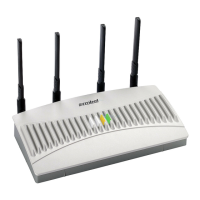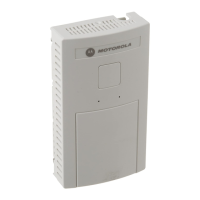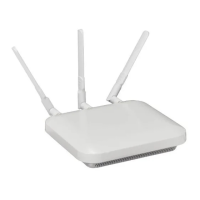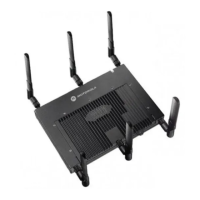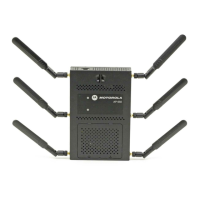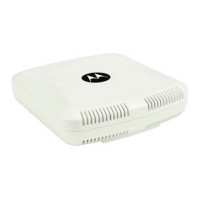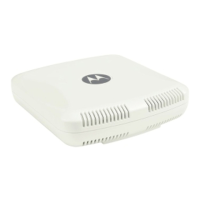Network Management
5-3
3. Refer to the LAN Ethernet Timeout field to define how LAN Ethernet inactivity is
processed by the access point.
Use the Ethernet Port Timeout drop-down menu to define how the access point interprets
inactivity for the LAN assigned to the Ethernet port. When Enabled is selected, the access
point uses the value defined in the Sec. box (default is 30 seconds). Selecting Disabled
allows the LAN to use the Ethernet port for an indefinite timeout period.
4. Refer to the 802.1x Port Authentication field if using port authentication over the access
point’s LAN port.
The access point only supports 802.1x authentication over its LAN port. The access point
behaves as an 802.1x supplicant to authenticate to a server on the network. If using 802.1x
authentication, enter the authentication server user name and password. The default
password is “motorola.” For information on enabling and configuring authentication
schemes on the access point, see Enabling Authentication and Encryption Schemes on page
6-5.
LAN Name Use the LAN Name field to modify the existing LAN name. LAN1
and LAN2 are the default names assigned to the LANs until
modified by the user.
Ethernet Port The Ethernet Port radio buttons allow you to select one of the two
available LANs as the LAN actively transmitting over the access
point’s LAN port. Both LANs can be active at any given time, but
only one can transmit over the access point’s physical LAN
connection, thus the selected LAN has priority.
Enable 802.1q
Trunking
Select the Enable 802.1q Trunking checkbox to enable the LAN
to conduct VLAN tagging. If selected, click the WLAN Mapping
button to configure mappings between individual WLANs and
LANs. If enabled, the access point is required to be connected to a
trunked port.
VLAN Name Click the VLAN Name button to launch the VLAN Name screen
to create VLANs and assign them VLAN IDs. For more information,
see Configuring VLAN Support on page 5-5.
WLAN Mapping Click the WLAN Mapping button to launch the VLAN
Configuration screen to map existing WLANs to one of the two
LANs and define the WLAN’s VLAN membership (up to 16
mappings are possible per access point). For more information, see
Configuring VLAN Support on page 5-5.

